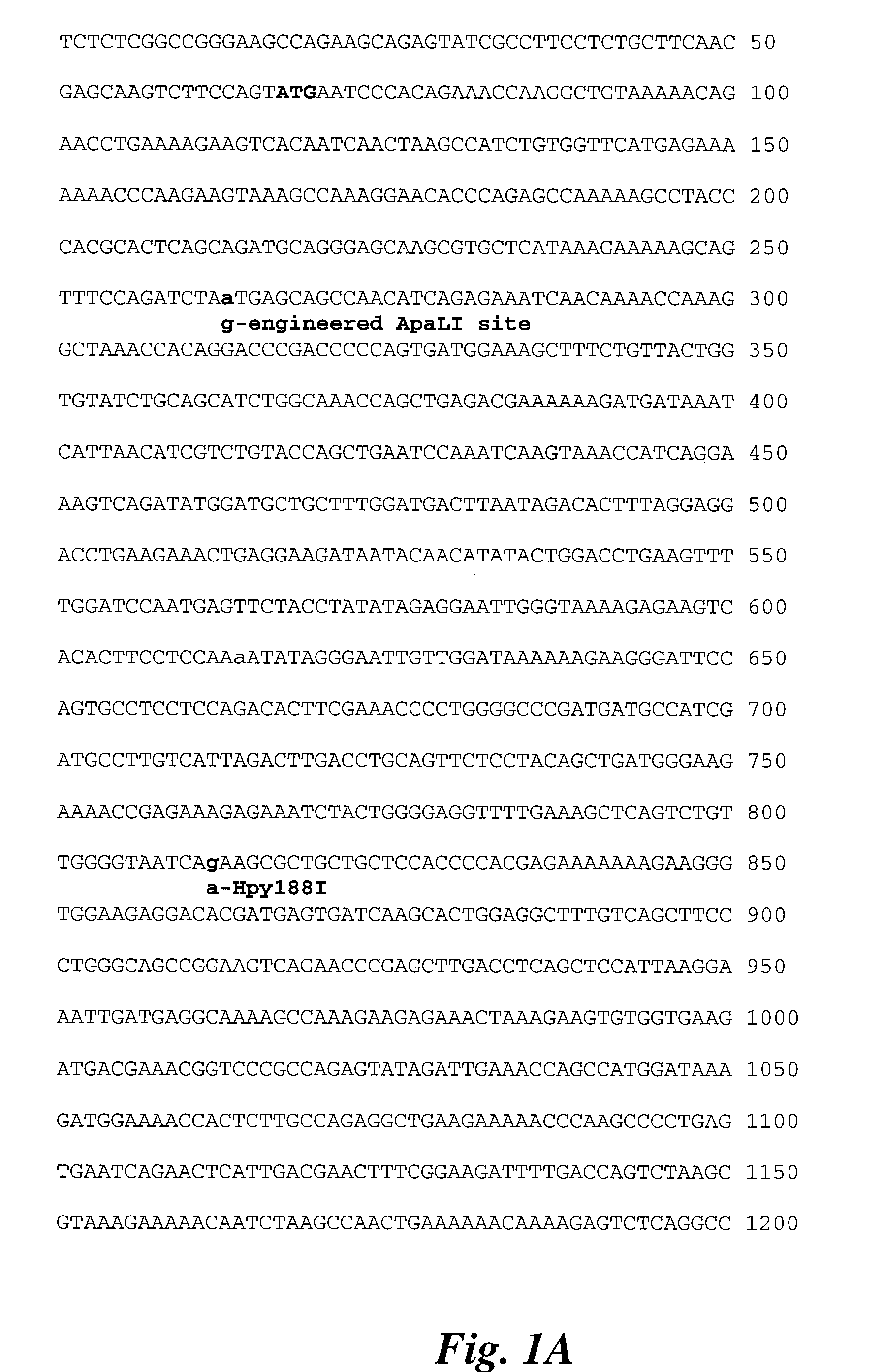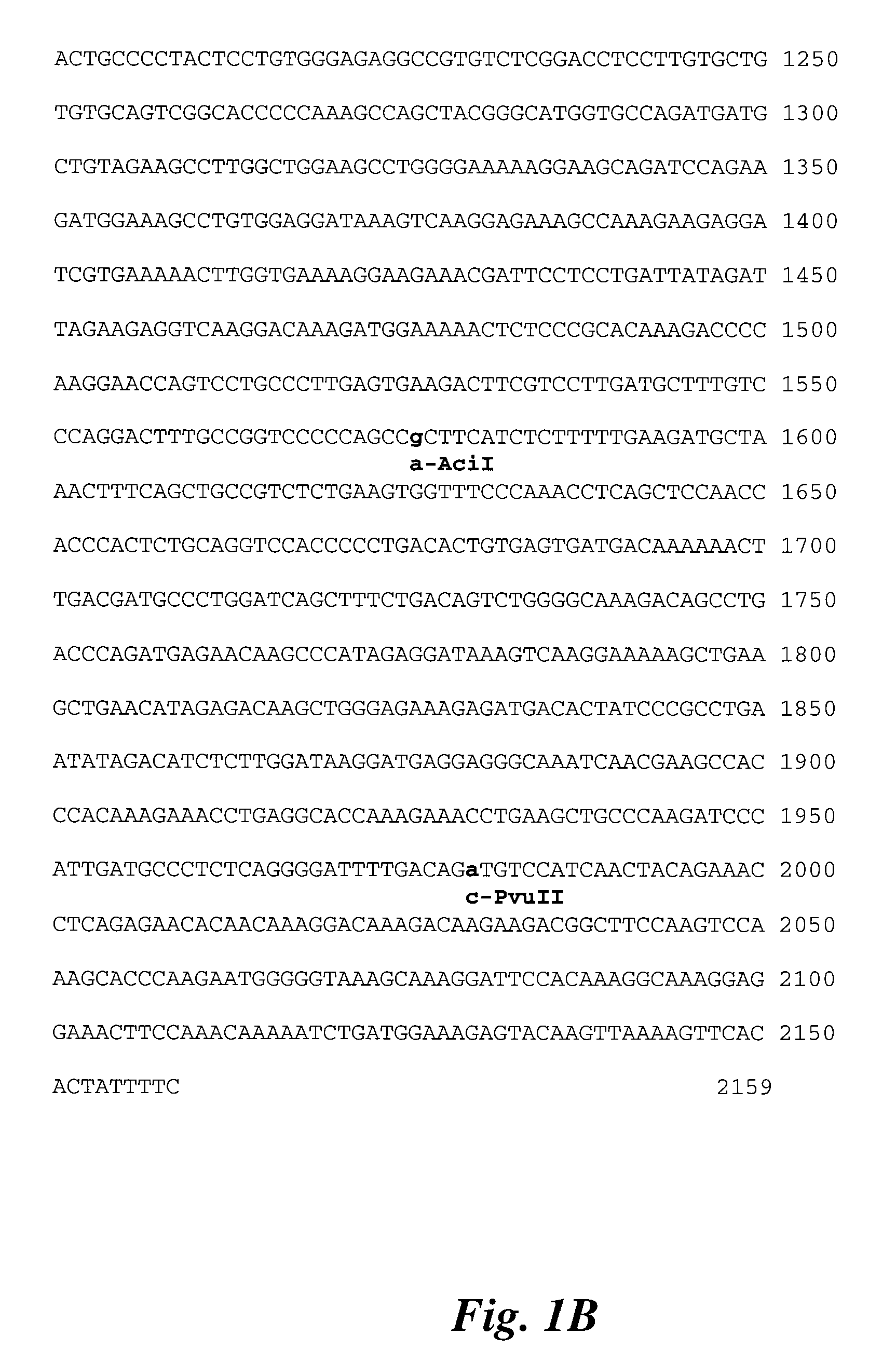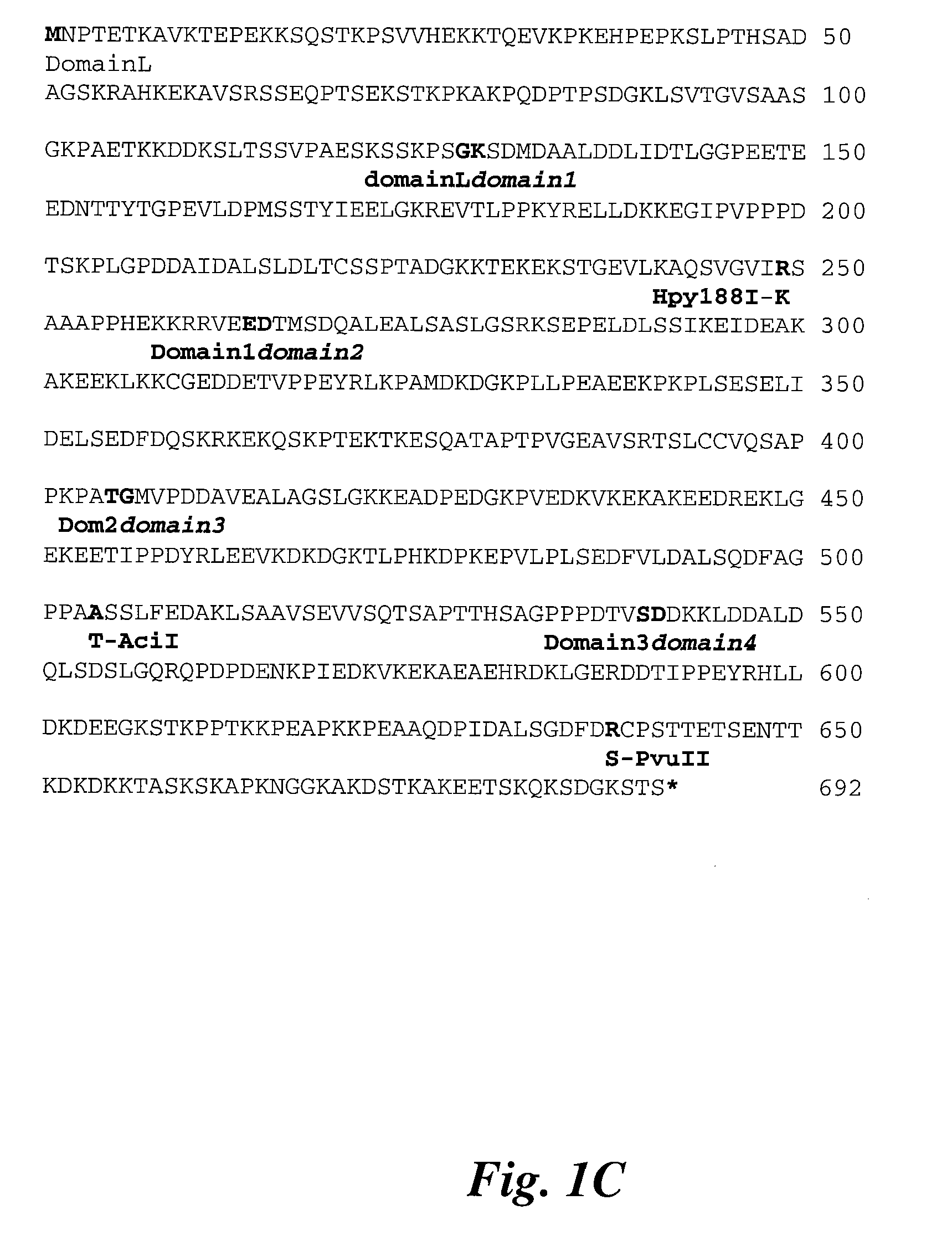Novel calpastatin (CAST) alleles
a cast allele, calpastatin technology, applied in the direction of peptides, endopeptidases, peptide sources, etc., can solve the problems of low heritability of desired traits, data collection on culled animals, and insufficient consideration of genetic variability, so as to increase the accuracy of selection
- Summary
- Abstract
- Description
- Claims
- Application Information
AI Technical Summary
Benefits of technology
Problems solved by technology
Method used
Image
Examples
example 1
[0132] CAST Hpy188I PCR-RFLP Test
[0133] Hpy188I polymorphism
[0134] Exon: 13 (domain 1)
[0135] Non-synonymous change: Arg-Lys
[0136] Allele 1-Lys (K)-AAA
[0137] Allele 2-Arg (R)-AGA
PrimersCI4F2:5′ AAA TCT ACT GGA GAG GTT TTG AA 3′SEQ ID NO:11CI4R2:5′ GAC TTC TCC CGA ATC AGT TCC 3′SEQ ID NO:12
[0138]
PCR conditionsMix110× PCR buffer1.0μlMgCl2 (15 mM)1.0μldNTPs (2 mM)1.0μlCI4F2 primer (10 pm / μl)0.25μlCI4R2 primer (10 pM / μl)0.25μlTaq polymerase (5 U / μl)0.07μlddH205.43μlgenomic DNA1μl
[0139] Combine the Mix1 and DNA in a reaction tube. Overlay with mineral oil. Run the following PCR program: 94° C. for 4 min.; 35 cycles of 94° C. for 45 sec., 54° C. for 45 sec and 72° C. for 30 sec; followed by a final extension at 72° C. for 12 min.
[0140] Check 3 μl of the PCR on a 2% agarose gel to confirm amplification. Product size is 182bp.
[0141] Hpy188I digestion:
1×Volume (μl)NEB Buffer 4 10×*1.0Hyp188I (10 units / □l)0.4ddWater5.6Mix Final Volume7.0
*NEB
[0142] Aliquot 7 μl Hpy188I mix and add 3...
example 2
[0197] A. CAST linkage mapping
[0198] For linkage mapping, the B×Y resource family (Malek et al. 2001) was genotyped using the CAST-MspI marker previously reported by Ernst et al. (1998) and two-point and multipoint linkage analysis was performed using the CRI-MAP program (Green et al. 1990).
[0199] The results of the linkage analysis showed that CAST gene was significantly linked to five markers on SSC2 (the two point recombination frequencies and LOD scores are given in parentheses): SW766 (0.02, 112.92), SW1408 (0.12, 67.34), SW2157 (0.15, 25.99) SW1844 (0.27, 13.16) and SW2445 (0.31, 11.36). These results and multipoint linkage analysis show that the CAST gene is most likely located between SW766 and SW1408, at approximately 73.1 Kosambi cM.
[0200] B. Polymorphism Discovery
[0201] We sequenced the entire CAST gene using RT-PCR and analyzing samples from the B×Y F3 generation family but also samples from Duroc and Meishan pig breeds, in order to find causative polymorphisms respo...
example 3
[0217] Association analysis between the CAST unsynonymous polymorphisms and meat quality and growth traits in pigs.
[0218] We designed a PCR-RFLP test for each of the unsynonymous polymorphism we discovered and we genotyped samples from the following resources:
a) The F2 generation of the B×Y family.
b) 14 Duroc DNA samples with Calpastatin activity data from Longisimus dorsi muscle measured at 0, 6 and 24 hr after slaughter.
c) 64 samples of a F1 generation Duroc×Yorkshire cross with meat quality data.
d) Three PIC commercial populations as follows: Large White and Duroc synthetic based lines and also a Composite line.
[0219] a) The F2 generation of the B×Y family was used for an association study between the CAST-Hpy188I and PvuII substitutions with the traits with QTL in the area where CAST was mapped (Table 2 and 15). CAST-AciI was not polymorphic in this population. This polymorphism we found to be highly informative in Meishan breed and the results are shown in Table 2. Th...
PUM
| Property | Measurement | Unit |
|---|---|---|
| temperature | aaaaa | aaaaa |
| temperature | aaaaa | aaaaa |
| pH | aaaaa | aaaaa |
Abstract
Description
Claims
Application Information
 Login to View More
Login to View More - R&D
- Intellectual Property
- Life Sciences
- Materials
- Tech Scout
- Unparalleled Data Quality
- Higher Quality Content
- 60% Fewer Hallucinations
Browse by: Latest US Patents, China's latest patents, Technical Efficacy Thesaurus, Application Domain, Technology Topic, Popular Technical Reports.
© 2025 PatSnap. All rights reserved.Legal|Privacy policy|Modern Slavery Act Transparency Statement|Sitemap|About US| Contact US: help@patsnap.com



